-
 Bitcoin
Bitcoin $106,731.2224
-1.05% -
 Ethereum
Ethereum $2,444.9804
-1.20% -
 Tether USDt
Tether USDt $1.0003
0.01% -
 XRP
XRP $2.1882
0.09% -
 BNB
BNB $651.1435
-0.61% -
 Solana
Solana $148.3252
-2.09% -
 USDC
USDC $1.0000
0.01% -
 TRON
TRON $0.2787
0.55% -
 Dogecoin
Dogecoin $0.1598
-3.16% -
 Cardano
Cardano $0.5520
-2.43% -
 Hyperliquid
Hyperliquid $39.0960
-2.64% -
 Bitcoin Cash
Bitcoin Cash $516.9519
2.98% -
 Sui
Sui $2.7011
-2.95% -
 Chainlink
Chainlink $13.0582
-1.71% -
 UNUS SED LEO
UNUS SED LEO $8.9250
-2.53% -
 Stellar
Stellar $0.2359
-0.18% -
 Avalanche
Avalanche $17.3856
-3.73% -
 Toncoin
Toncoin $2.8095
-3.56% -
 Shiba Inu
Shiba Inu $0.0...01121
-1.95% -
 Litecoin
Litecoin $85.2795
-0.85% -
 Hedera
Hedera $0.1471
-2.15% -
 Monero
Monero $319.8004
1.12% -
 Dai
Dai $1.0001
0.01% -
 Ethena USDe
Ethena USDe $1.0001
0.02% -
 Bitget Token
Bitget Token $4.5344
-1.07% -
 Polkadot
Polkadot $3.3224
-2.96% -
 Uniswap
Uniswap $6.9697
-2.75% -
 Aave
Aave $266.1658
-2.25% -
 Pepe
Pepe $0.0...09414
-3.41% -
 Pi
Pi $0.4913
-3.29%
How to trade long and short on Bitget
Trading long and short on Bitget involves buying or selling cryptocurrencies with the expectation of price changes; use leverage cautiously and set stop-loss orders to manage risks effectively.
Apr 04, 2025 at 04:36 pm
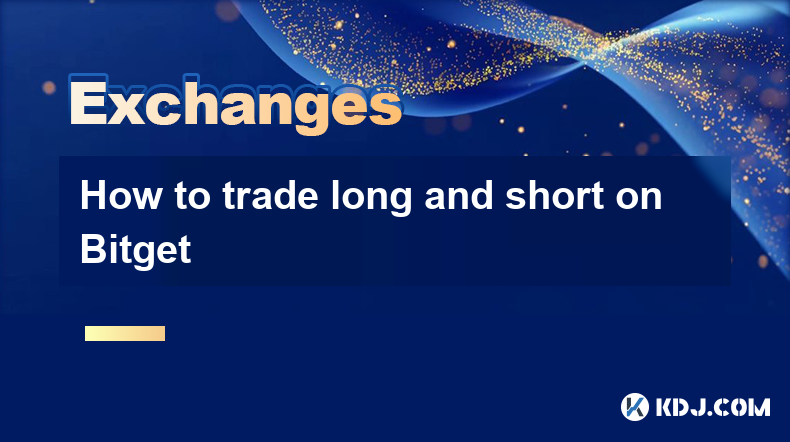
Trading long and short on Bitget can be an effective way to capitalize on the volatility of the cryptocurrency market. Whether you're looking to profit from rising prices or take advantage of falling ones, understanding how to execute these trades is crucial. In this article, we'll explore the steps and strategies for trading long and short on Bitget, one of the leading cryptocurrency exchanges.
Understanding Long and Short Trading
Before diving into the specifics of trading on Bitget, it's important to understand the basics of long and short trading. Long trading involves buying a cryptocurrency with the expectation that its price will increase. If the price does rise, you can sell it at a higher price and make a profit. Conversely, short trading involves selling a cryptocurrency you don't own with the expectation that its price will fall. If the price does drop, you can buy it back at a lower price and pocket the difference.
Setting Up Your Bitget Account
To start trading long and short on Bitget, you'll first need to set up an account. Here's how you can do it:
- Visit the Bitget website and click on the "Sign Up" button.
- Enter your email address and create a strong password.
- Complete the verification process by providing the required personal information and documents.
- Once your account is verified, you can deposit funds into your Bitget wallet.
Depositing Funds into Your Bitget Wallet
After setting up your account, you'll need to deposit funds to start trading. Bitget supports a variety of cryptocurrencies, so you can choose the one you want to trade with. Here's how to deposit funds:
- Navigate to the "Wallet" section on the Bitget platform.
- Select the cryptocurrency you want to deposit and click on "Deposit."
- You'll be provided with a deposit address. Copy this address and use it to send funds from your external wallet to your Bitget wallet.
- Wait for the transaction to be confirmed on the blockchain, and the funds will appear in your Bitget wallet.
Trading Long on Bitget
Now that you have funds in your Bitget wallet, you can start trading long. Here's a step-by-step guide on how to do it:
- Navigate to the "Spot" trading section on Bitget.
- Choose the cryptocurrency pair you want to trade, such as BTC/USDT.
- Enter the amount you want to buy and click on "Buy."
- If the price of the cryptocurrency increases, you can sell it at a higher price to make a profit.
Trading Short on Bitget
Trading short on Bitget involves a bit more complexity, as you'll need to use the platform's margin trading feature. Here's how to trade short:
- Navigate to the "Margin" trading section on Bitget.
- Choose the cryptocurrency pair you want to trade, such as BTC/USDT.
- Click on "Borrow" to borrow the cryptocurrency you want to sell short.
- Enter the amount you want to borrow and click on "Borrow."
- Once you have the borrowed cryptocurrency, click on "Sell" to sell it at the current market price.
- If the price of the cryptocurrency falls, you can buy it back at a lower price and return it to the lender, pocketing the difference as profit.
Managing Risk and Setting Stop-Loss Orders
Trading long and short on Bitget can be highly profitable, but it also comes with significant risks. To manage these risks, it's important to use stop-loss orders. A stop-loss order automatically sells your position if the price reaches a certain level, helping to limit your potential losses. Here's how to set a stop-loss order on Bitget:
- After entering a long or short position, navigate to the "Orders" section.
- Click on the position you want to set a stop-loss for.
- Enter the price at which you want the stop-loss to trigger and click on "Set Stop-Loss."
- Monitor your position and adjust the stop-loss as needed to protect your profits.
Monitoring Your Trades and Adjusting Your Strategy
Successful trading on Bitget requires constant monitoring and adjustment of your strategy. Here are some tips to help you stay on top of your trades:
- Use the Bitget trading platform's charting tools to analyze market trends and identify potential entry and exit points.
- Set up price alerts to notify you when a cryptocurrency reaches a certain price level.
- Regularly review your trading performance and adjust your strategy based on what's working and what's not.
- Stay informed about market news and events that could impact the price of the cryptocurrencies you're trading.
Using Leverage to Amplify Your Returns
Bitget offers the option to use leverage when trading long and short, which can amplify your potential returns. However, it's important to use leverage cautiously, as it can also increase your potential losses. Here's how to use leverage on Bitget:
- Navigate to the "Margin" trading section on Bitget.
- Choose the cryptocurrency pair you want to trade and select the leverage level you want to use.
- Enter the amount you want to trade and click on "Buy" or "Sell" to enter the position.
- Monitor your position closely, as the use of leverage can result in rapid gains or losses.
Common Questions About Trading Long and Short on Bitget
Q: What is the difference between trading long and short on Bitget?
A: Trading long on Bitget involves buying a cryptocurrency with the expectation that its price will increase, while trading short involves selling a cryptocurrency you don't own with the expectation that its price will fall.
Q: How do I set up a Bitget account to start trading long and short?
A: To set up a Bitget account, visit the Bitget website, click on "Sign Up," enter your email address and create a password, and complete the verification process by providing the required personal information and documents.
Q: Can I use leverage when trading long and short on Bitget?
A: Yes, Bitget offers the option to use leverage when trading long and short. You can select the leverage level you want to use in the "Margin" trading section of the platform.
Q: How can I manage risk when trading long and short on Bitget?
A: To manage risk when trading long and short on Bitget, you can use stop-loss orders to automatically sell your position if the price reaches a certain level. Additionally, you should regularly monitor your trades and adjust your strategy based on market conditions.
Q: What are some tips for successful trading on Bitget?
A: Some tips for successful trading on Bitget include using the platform's charting tools to analyze market trends, setting up price alerts, regularly reviewing your trading performance, and staying informed about market news and events that could impact the price of the cryptocurrencies you're trading.
Disclaimer:info@kdj.com
The information provided is not trading advice. kdj.com does not assume any responsibility for any investments made based on the information provided in this article. Cryptocurrencies are highly volatile and it is highly recommended that you invest with caution after thorough research!
If you believe that the content used on this website infringes your copyright, please contact us immediately (info@kdj.com) and we will delete it promptly.
- Altcoins in June 2025: Data, Trends, and What's Next for Crypto
- 2025-07-01 21:30:12
- SUI Price Breakout Watch: Will 2025 Forecasts Hit the Mark?
- 2025-07-01 21:30:12
- BTCBULL: Riding Bitcoin's Bull Run to Crypto Glory
- 2025-07-01 20:30:11
- DOJ Cracks Down: North Korea's Crypto Theft Ring Exposed
- 2025-07-01 20:50:11
- Bitcoin's July Jolt: Will We See a New ATH?
- 2025-07-01 20:30:11
- Bitcoin Cash Price Surges to 8-Month High: Is $1,700 Next?
- 2025-07-01 20:35:12
Related knowledge
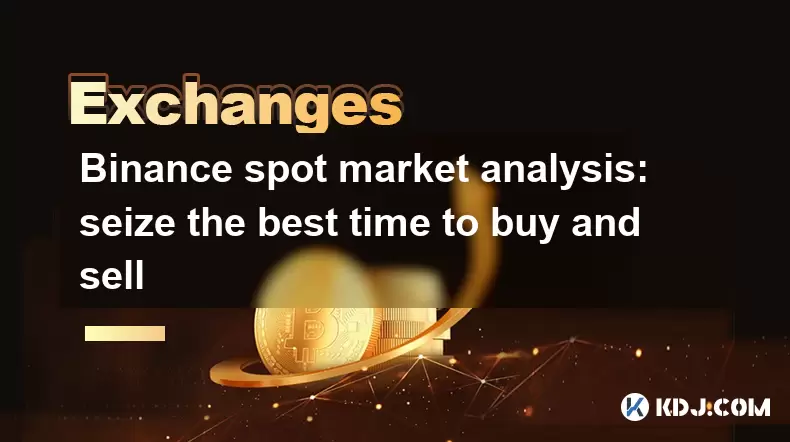
Binance spot market analysis: seize the best time to buy and sell
Jun 19,2025 at 04:56pm
Understanding the Binance Spot MarketThe Binance spot market is one of the most popular platforms for cryptocurrency trading globally. It allows users to trade digital assets at current market prices, making it essential for traders aiming to buy low and sell high. Unlike futures or margin trading, spot trading involves direct ownership of the asset aft...
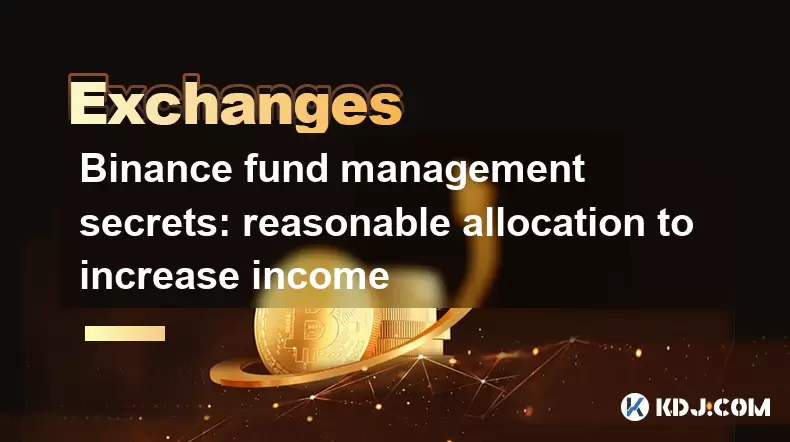
Binance fund management secrets: reasonable allocation to increase income
Jun 22,2025 at 02:29pm
Understanding Binance Fund ManagementBinance fund management involves strategic allocation of your cryptocurrency assets to optimize returns while managing risk. The key to successful fund management lies in understanding how different investment options on the Binance platform can be utilized to create a diversified portfolio. This includes spot tradin...
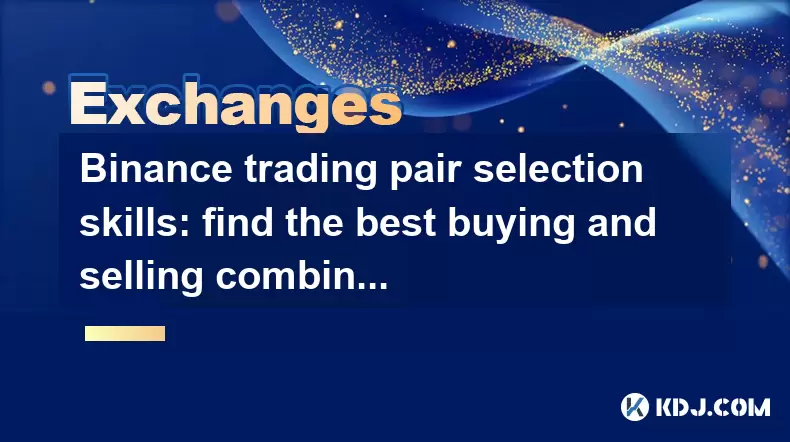
Binance trading pair selection skills: find the best buying and selling combination
Jun 23,2025 at 02:49am
Understanding the Basics of Trading Pairs on BinanceBefore diving into trading pair selection skills, it's essential to understand what a trading pair is. On Binance, a trading pair refers to two cryptocurrencies that can be traded against each other. For example, BTC/USDT means Bitcoin is being traded against Tether. Each trading pair has its own liqui...
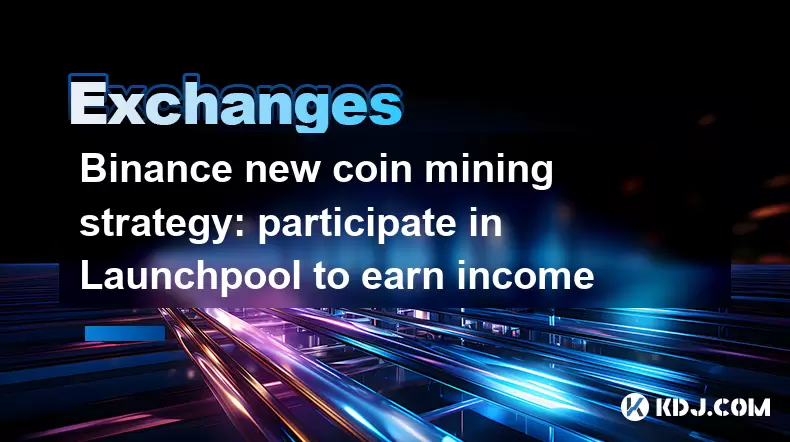
Binance new coin mining strategy: participate in Launchpool to earn income
Jun 23,2025 at 11:56am
What is Binance Launchpool and how does it work?Binance Launchpool is a feature introduced by the world’s largest cryptocurrency exchange, Binance, to allow users to earn new tokens through staking. This platform enables users to stake their existing cryptocurrencies (such as BNB, BUSD, or other supported assets) in exchange for newly launched tokens. T...
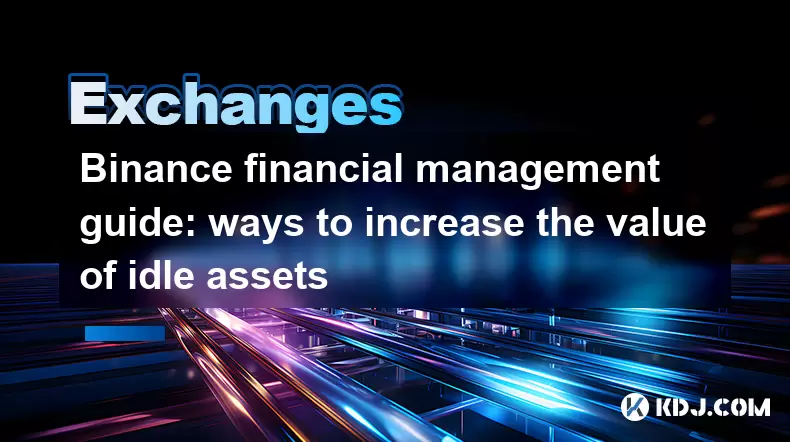
Binance financial management guide: ways to increase the value of idle assets
Jun 19,2025 at 11:22pm
Understanding Idle Assets in the Cryptocurrency SpaceIn the fast-paced world of cryptocurrency, idle assets refer to digital currencies that are not actively being used for trading, staking, or yield farming. Holding these funds in a wallet without utilizing them means missing out on potential growth opportunities. Binance, as one of the leading platfor...
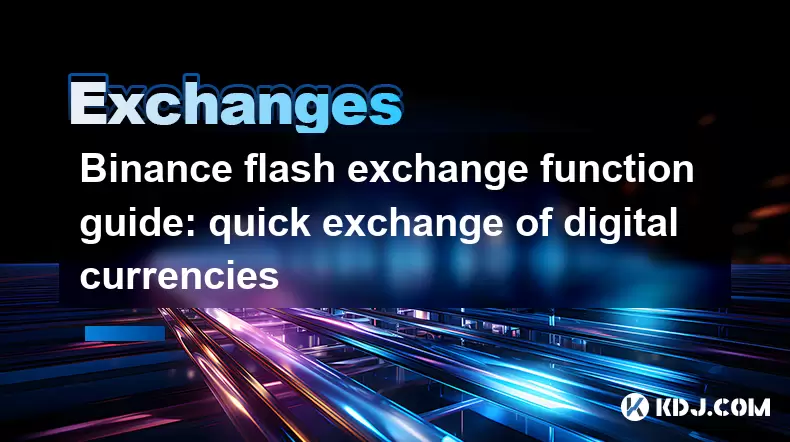
Binance flash exchange function guide: quick exchange of digital currencies
Jun 23,2025 at 12:29pm
What is the Binance Flash Exchange Function?The Binance Flash Exchange function is a powerful tool designed to allow users to instantly swap between supported cryptocurrencies without the need for placing traditional buy/sell orders. This feature simplifies the trading process by offering a direct exchange mechanism, eliminating the requirement to conve...

Binance spot market analysis: seize the best time to buy and sell
Jun 19,2025 at 04:56pm
Understanding the Binance Spot MarketThe Binance spot market is one of the most popular platforms for cryptocurrency trading globally. It allows users to trade digital assets at current market prices, making it essential for traders aiming to buy low and sell high. Unlike futures or margin trading, spot trading involves direct ownership of the asset aft...

Binance fund management secrets: reasonable allocation to increase income
Jun 22,2025 at 02:29pm
Understanding Binance Fund ManagementBinance fund management involves strategic allocation of your cryptocurrency assets to optimize returns while managing risk. The key to successful fund management lies in understanding how different investment options on the Binance platform can be utilized to create a diversified portfolio. This includes spot tradin...

Binance trading pair selection skills: find the best buying and selling combination
Jun 23,2025 at 02:49am
Understanding the Basics of Trading Pairs on BinanceBefore diving into trading pair selection skills, it's essential to understand what a trading pair is. On Binance, a trading pair refers to two cryptocurrencies that can be traded against each other. For example, BTC/USDT means Bitcoin is being traded against Tether. Each trading pair has its own liqui...

Binance new coin mining strategy: participate in Launchpool to earn income
Jun 23,2025 at 11:56am
What is Binance Launchpool and how does it work?Binance Launchpool is a feature introduced by the world’s largest cryptocurrency exchange, Binance, to allow users to earn new tokens through staking. This platform enables users to stake their existing cryptocurrencies (such as BNB, BUSD, or other supported assets) in exchange for newly launched tokens. T...

Binance financial management guide: ways to increase the value of idle assets
Jun 19,2025 at 11:22pm
Understanding Idle Assets in the Cryptocurrency SpaceIn the fast-paced world of cryptocurrency, idle assets refer to digital currencies that are not actively being used for trading, staking, or yield farming. Holding these funds in a wallet without utilizing them means missing out on potential growth opportunities. Binance, as one of the leading platfor...

Binance flash exchange function guide: quick exchange of digital currencies
Jun 23,2025 at 12:29pm
What is the Binance Flash Exchange Function?The Binance Flash Exchange function is a powerful tool designed to allow users to instantly swap between supported cryptocurrencies without the need for placing traditional buy/sell orders. This feature simplifies the trading process by offering a direct exchange mechanism, eliminating the requirement to conve...
See all articles

























































































